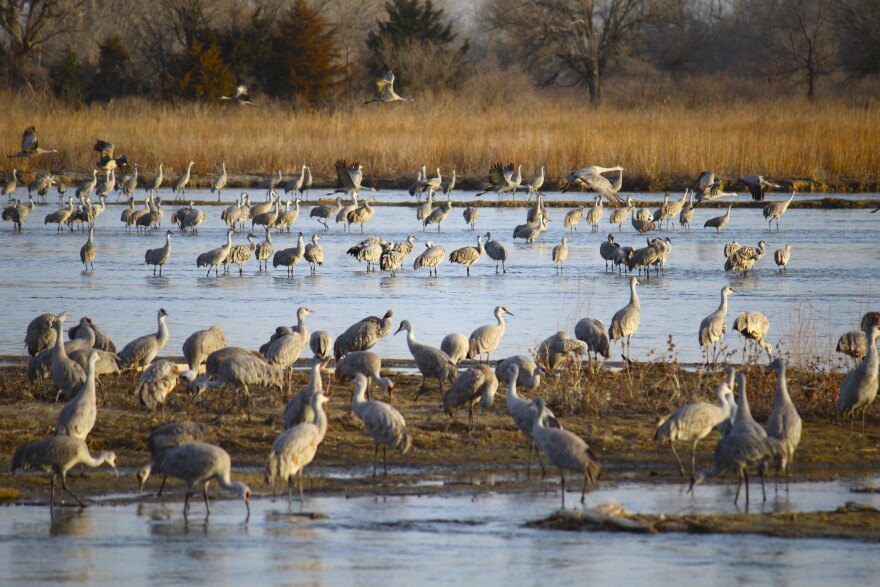Correspondent, Tom Wilmer reports from Gibbon, Nebraska where he visits with Bill Taddicken, Director of the Iain Nicolson Audubon Center Rowe Sanctuary on the outskirts of Kearney, Nebraska.
Every year, like clockwork, from late February through early April, more 500,000 Sandhill Cranes descend on Nebraska’s Platte River Valley during their annual northbound migration to Canada and the Arctic tundra.

The Crane is one of the world’s oldest and most revered bird species. Nine million-year-old crane fossils have been recorded in Nebraska. Today, the Great Platte River Valley remains as a vital resting and refueling spot.

Cranes spend their days gorging on leftover corn in the surrounding fields, and then retreat to the Platte River’s protected sandbars around sunset.

The Crane is an amazing avian—they love to catch the thermals, and with a good tailwind can cruise up to 35 miles an hour, traveling sometimes as far as 500 miles in a single day.

Cranes have been spotted sailing on thermals in excess of 25,000 feet above sea level. The total population of Lesser and Greater Cranes and their sub-species ranges between 600,000 and 800,000.

The Iain Nicolson Audubon Center Rowe Sanctuary was the recipient of the prestigious 2015 Phoenix Award presented by the Society of American Travel Writers

You are invited to subscribe to the Lowell Thomas award-winning NPR Podcast travel show Journeys of Discovery with Tom Wilmer via:
- iTunes
- NPR.ORG Podcast Directory
- NPR One (APP)
- Stitcher.com
- player.fm
- podcast.de (Germany)
- blubrry.com
- ivoox (Spain)
- myTuner
Follow Tom on Social Media
Twitter: TomCWilmer
Instagram: Thomas.Wilmer








